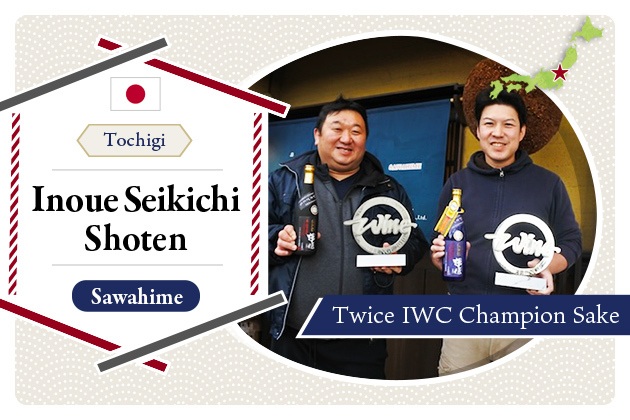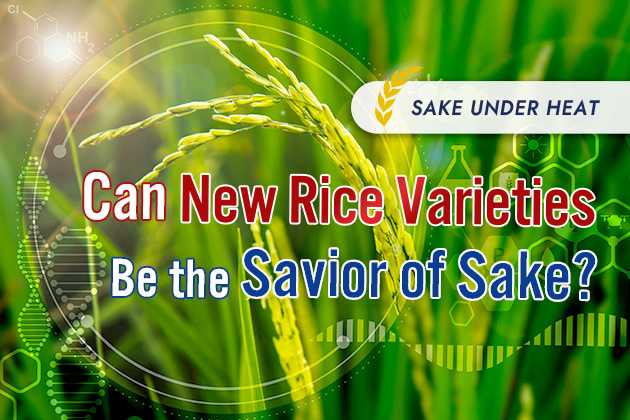
2024.03
20
Genealogy of Miyamanishiki: Third Largest Sake Rice Produced in Japan
Miyamanishiki is the third most produced sake rice in Japan, after Yamadanishiki and Gohyakumangoku. Characterized by its light, crisp flavor, it is a variety often used to make sake with a gorgeous aroma that is well suited for ginjo production. This article explains its characteristics, genealogy, and history.
What is Miyamanishiki?
The history of Miyamanishiki is relatively new; it was created in 1978 at the National Agricultural Experiment Station in Nagano Prefecture. Produced in the beautiful natural environment of Nagano Prefecture, it was named “Miyama (a beautiful mountain) nishiki" because the shinpaku (heart of the grain) resembles the snow on the top of a mountain. It is the third most produced variety after Yamadanishiki and Gohyakumangoku, but its production is declining every year, due in part to the increase in the number of original sake rice varieties developed by each prefecture.
Miyamanishiki is a "wase" variety in which the rice matures earlier than normal, which is hard and does not dissolve easily during brewing. As a result, it tends to produce sake with a light, refreshing taste and sharpness. It is also suitable for ginjo category because of its high rate of shinpaku expression, which is suitable for saccharification and fermentation.
Because of these characteristics, sake made from Miyamanishiki tends to have a clean, light flavor and a gorgeous aroma resulting from the ginjo process.
Genealogy of Miyamanishiki
Miyamanishiki (Image source: Ask)
Miyamanishiki is a sake rice that was created in 1978 when the sake rice Takane-nishiki was mutated by radiation treatment. Takane-nishiki was often used in Nagano Prefecture because it was easy to grow in cold regions and had a high yield, but its small size and low shinpaku expression rate meant that it was not highly suited for sake brewing. Miyamanishiki, an easily cultivatable variety highly suitable for sake brewing, was eagerly anticipated and greatly valued.
Takane-nishiki was born in 1939 at the same experimental station with Hokuriku 12 as its mother and Norin 17 as its father. Its ancestor is the famous Kame-no-o, which was once called phantom rice.
Later, in 1995, Dewasansan was born as a child of Miyamanishiki, with excellent properties as a sake rice. Dewasansan was created to replace Miyamanishiki, which until then had been the mainstay of Yamagata Prefecture's sake rice. By crossing Miyamanishiki with Hanafubuki, a variety born in Aomori Prefecture that is highly resistant to cold and does not easily fall over, it emerged as an original Yamagata Prefecture variety.
Main production area
Miyamanishiki is a resistant variety to the colder climate, so it is grown primarily in Nagano Prefecture, but also in Akita, Yamagata, Fukushima, Miyagi, and other prefectures in the Tohoku (northeastern Japan) region.
| Production Area | Amount |
|---|---|
| Nagano | 3,898t |
| Akita | 1,565t |
| Yamagata | 524t |
| Fukushima | 194t |
| Miyagi | 131t |
Reference: Ministry of Agriculture, Forestry and Fisheries Agricultural product inspection results (production volume) of sake brewing rice and estimated production volume in 2018
It is widely used not only in Nagano Prefecture and Tohoku, but also in sake throughout Japan.
Summary
Miyamanishiki is a relatively new variety among major sake rice varieties, created by irradiating Takane-nishiki, and can be grown in cold regions due to its excellent low-temperature tolerance. It is an early rice that is relatively hard to dissolve, and its high shinpaku ratio makes it a popular sake rice used for sake with a light, refreshing flavor.
Knowing the characteristics of sake rice will make it easier to find the sake that best suits your tastes. Take a look at our other articles explaining other varieties.
Pickup Articles
2019.01.18
2019.01.25
Trending Articles
Popular Articles
Recent Articles













